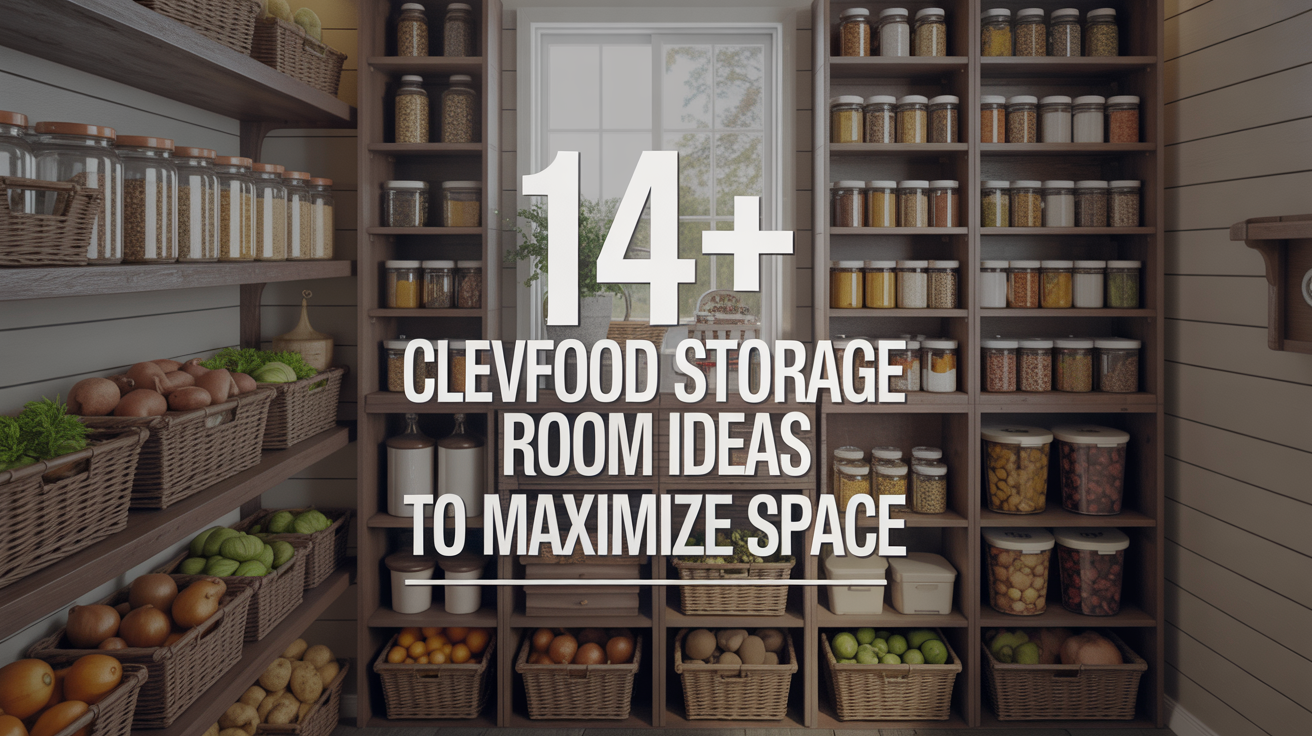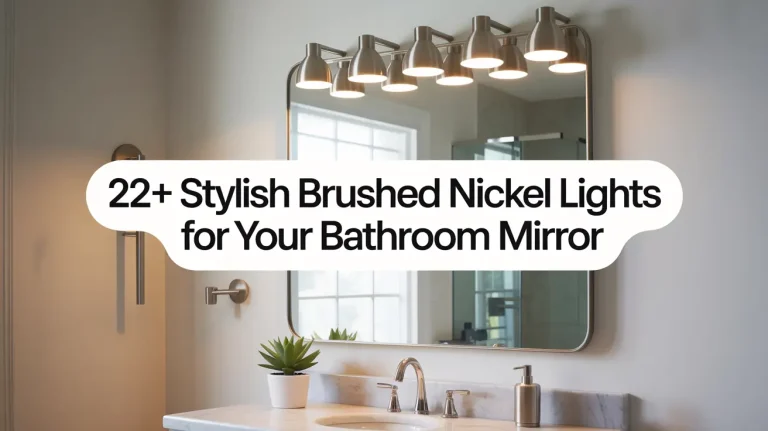14+ Clever Food Storage Room Ideas to Maximize Space
A food storage room is more than just a place to put groceries. When designed right, it keeps your food safe, organized, and easy to reach. Whether you have a small pantry or a big walk-in storage room, the secret is using every inch smartly. With over two decades of helping people design and organize food storage spaces, I’ve learned that it’s not about the size of your room—it’s about the system you create inside it.
In this guide, I’ll share 14+ clever ways to make your food storage room hold more, stay neater, and last longer.
1. Install Floor-to-Ceiling Shelving for Maximum Capacity
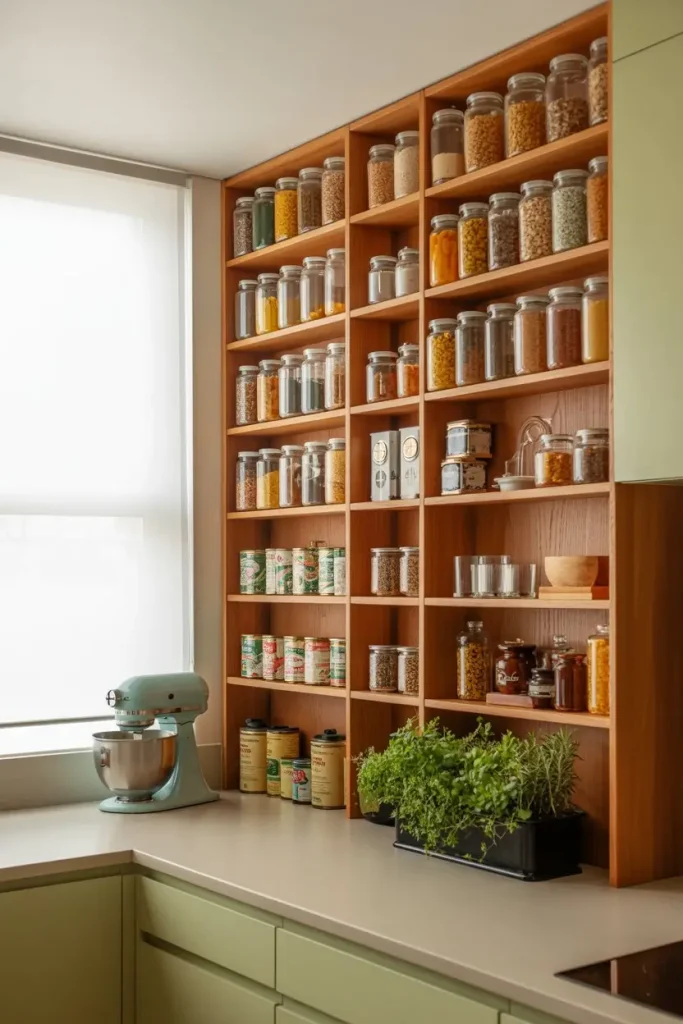
If your shelves stop at eye level, you’re losing valuable storage space. Adding floor-to-ceiling shelving transforms a plain wall into a food storage powerhouse. The top shelves are perfect for bulk items you don’t need every day, while the lower levels can hold heavy or frequently used items.
When building these shelves, make sure the depth suits your space. Deep shelves are great for bulk containers but can make small items disappear in the back. Shallower shelves keep everything visible and prevent waste. Adjustable shelves add flexibility, letting you change the height for cans, bottles, or tall jars as your needs shift.
2. Use Glass Jars and Clear Containers for Easy Visibility
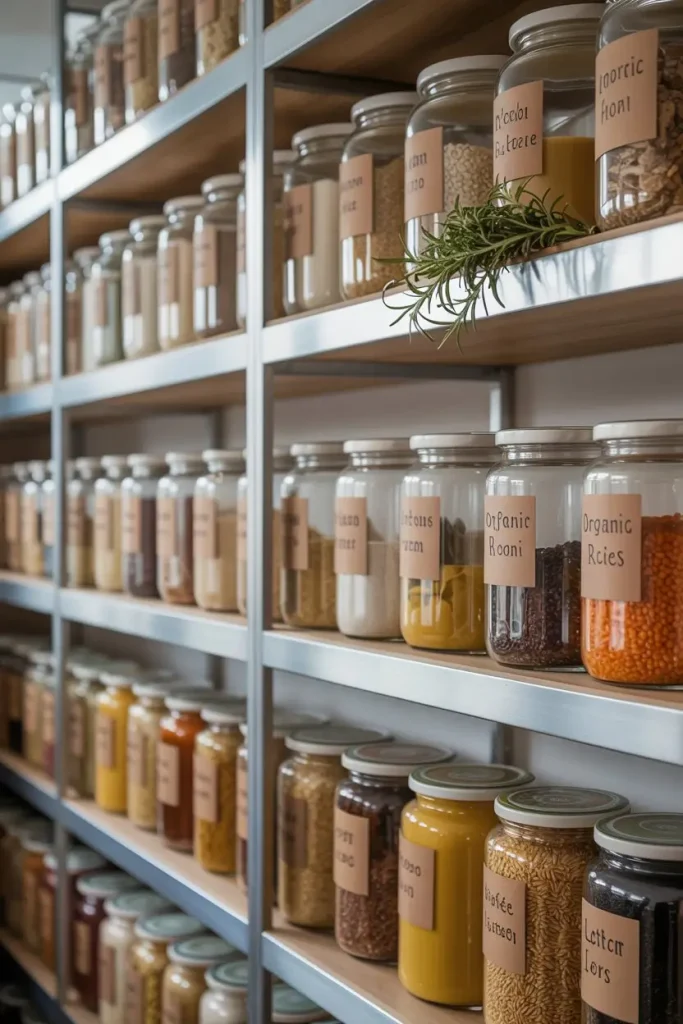
One of the most common problems in a food storage room is forgetting what you have until it expires. Clear containers fix this by letting you see everything at a glance. Glass jars work well for dry goods like rice, pasta, and beans. Airtight lids keep moisture and pests out, which means your food lasts longer.
For a professional look, use matching containers and label them clearly. This isn’t just about style—labels help you track expiration dates and keep your storage rotation system in check.
3. Add Pull-Out Drawers for Small and Heavy Items
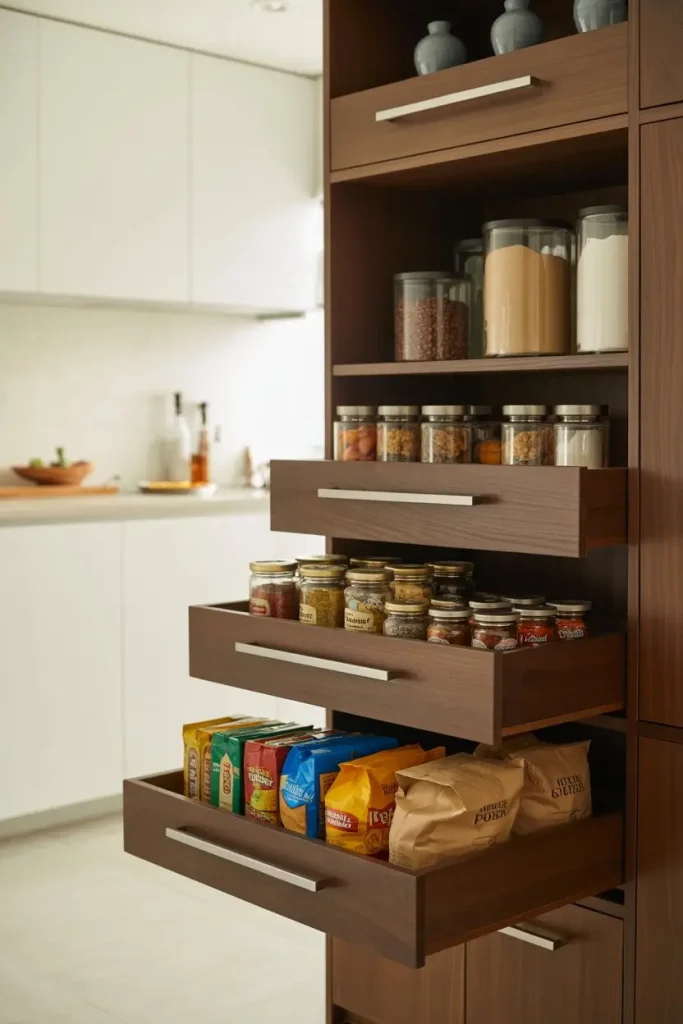
Fixed shelves can waste space and make it hard to reach items at the back. Pull-out drawers solve this problem by letting you slide everything forward. They’re especially useful for small jars, snack packs, or heavy bags of flour and sugar.
Metal glide drawers are sturdy and can hold a surprising amount of weight. You can install them inside a pantry cabinet or under existing shelves to instantly add more storage without a full remodel.
4. Use the Back of the Door for Slim Storage

The back of a pantry or storage room door is prime real estate. Over-the-door racks are perfect for spices, condiments, snack bars, and other small items that get lost on deep shelves. For heavier items, choose a wall-mounted rack that screws securely into the door.
If your door swings into the room and blocks space, consider a sliding barn-style door instead. This not only frees up more usable space but can add a stylish touch to your storage room.
5. Create Zones for Different Food Types
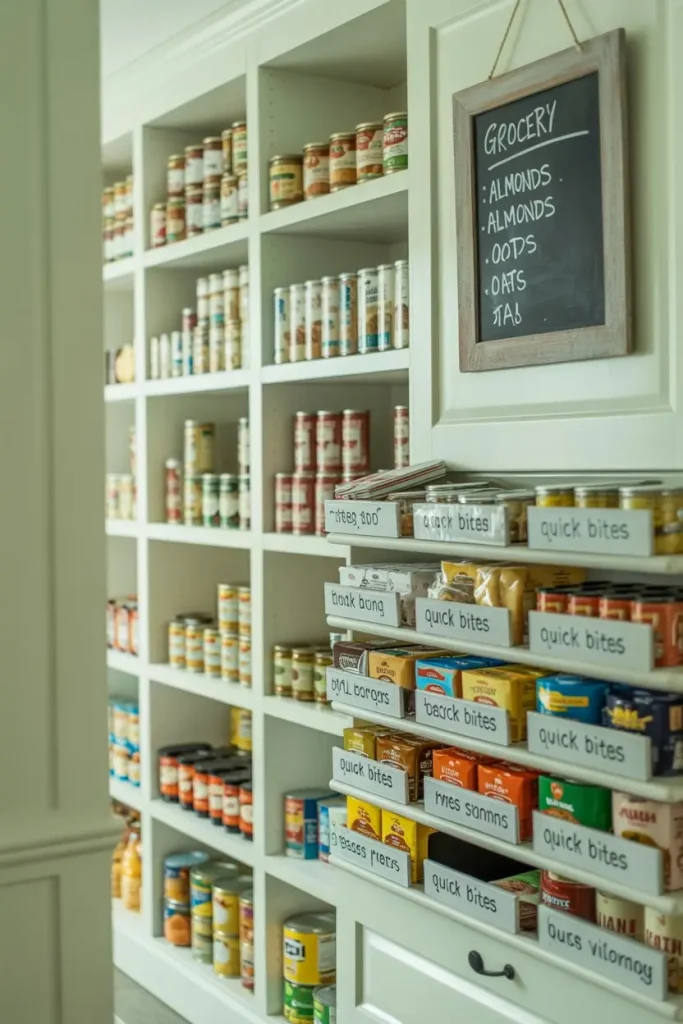
A food storage room works best when it’s organized into zones. Group similar items together—canned goods in one area, baking supplies in another, snacks in a separate section. This prevents duplicates, helps you plan meals faster, and keeps your grocery shopping list accurate.
Zones also make restocking easier. When everything has a set place, you can put away groceries quickly without wondering where something should go.
6. Store Bulk Items in Lidded Bins
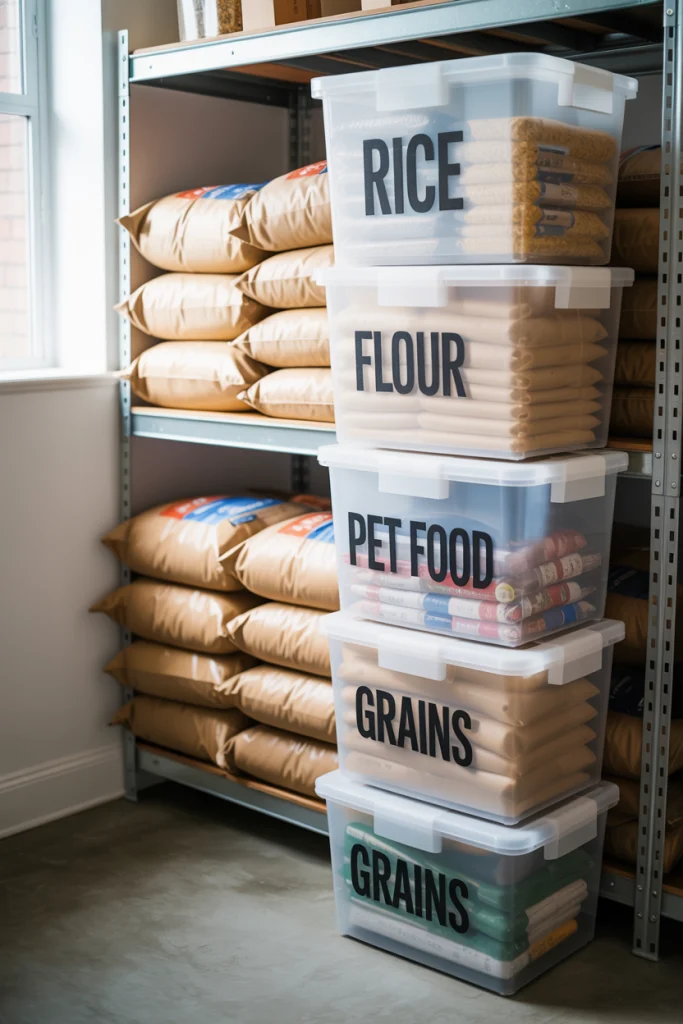
If you shop at warehouse clubs or buy large bags of rice, flour, or pet food, you need bins that can handle bulk storage. Heavy-duty plastic bins with tight lids protect against pests and moisture. Stackable designs save space while keeping food safe.
Place these bins on lower shelves or the floor so they’re easy to lift and scoop from without straining your back.
7. Install a Lazy Susan in Corners
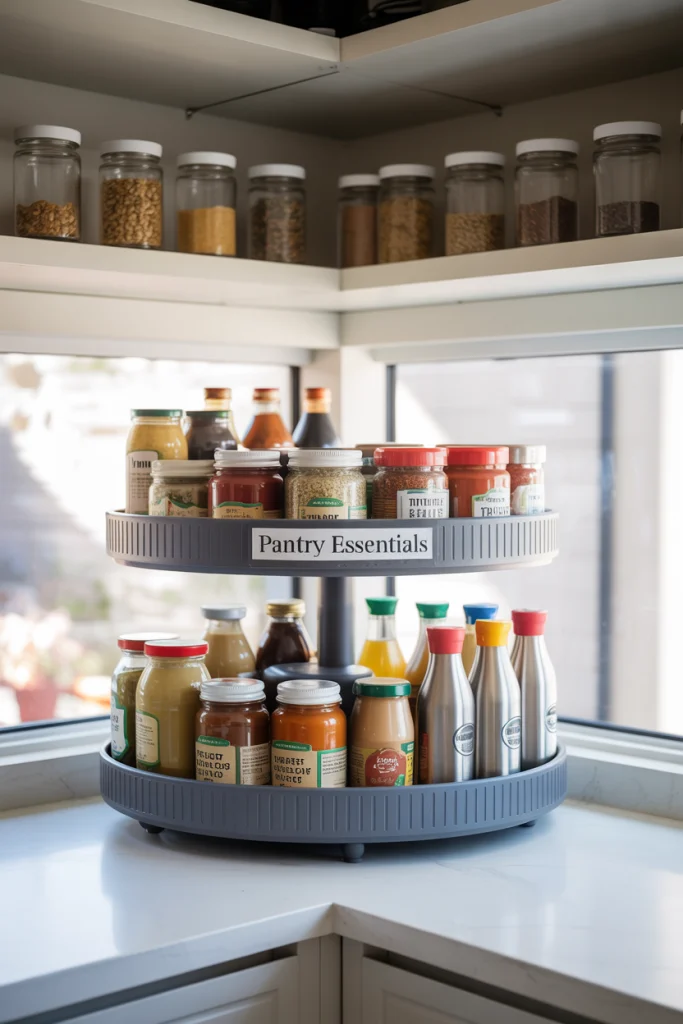
Corners are often wasted space in storage rooms. A Lazy Susan fixes that by letting you spin items around for easy access. These turntables work well for condiments, sauces, or jars that tend to get lost in dark corners.
Choose a sturdy, two-tier model for maximum storage. Non-slip surfaces keep items from sliding off when you spin it.
8. Add a Second Row to Deep Shelves
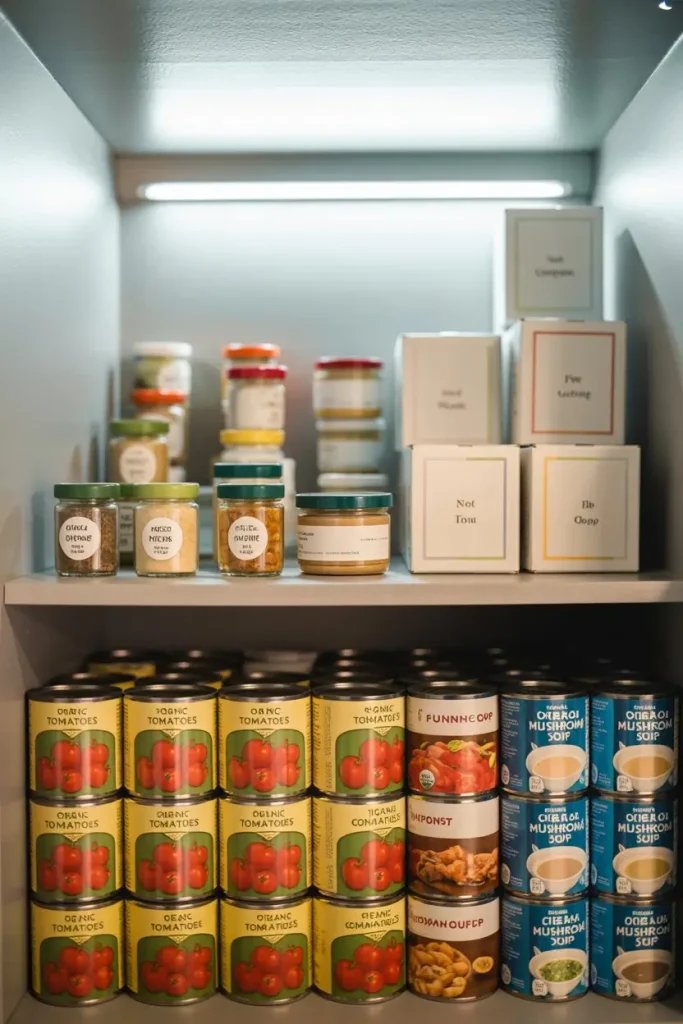
If your shelves are deep, smaller items can vanish behind bigger ones. Adding a second row—either with a raised step shelf or a shallow riser—keeps everything visible. This is especially useful for canned goods, where you want to see labels without moving things around.
This small change can double your storage efficiency without adding more shelves.
9. Keep a Rolling Cart for Overflow Items
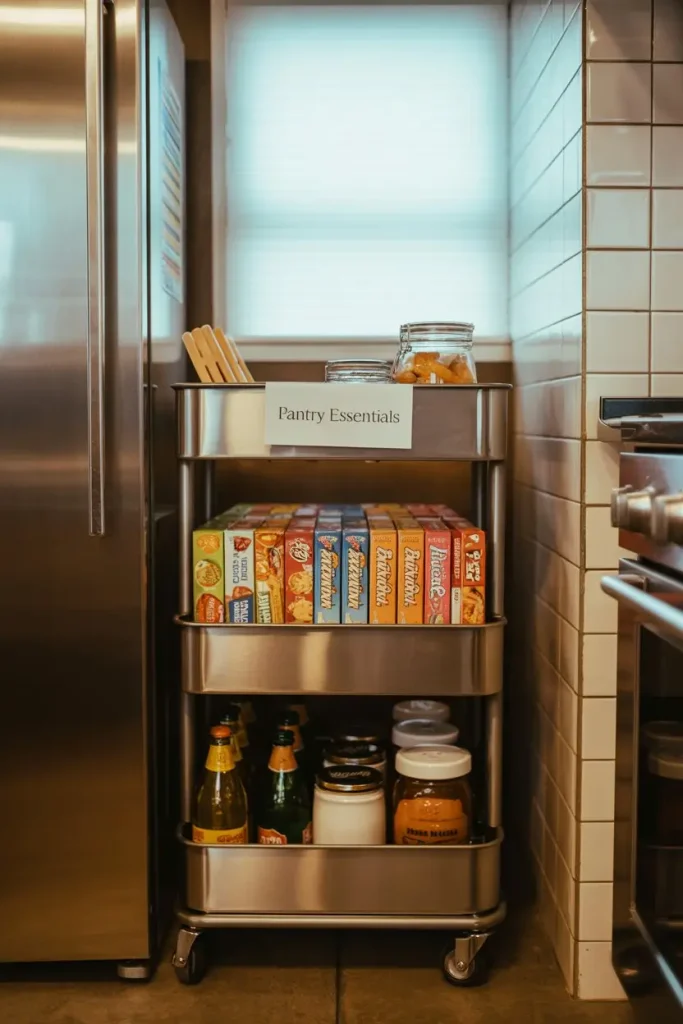
A slim rolling cart can slide into narrow gaps in your storage room or kitchen. These carts are perfect for overflow items when you’ve just returned from a big grocery trip.
You can stock them with snacks, bottled drinks, or baking supplies, then roll them out of sight when not in use. If you choose a cart with adjustable shelves, you can use it for both tall bottles and short jars.
10. Use Vacuum-Sealed Bags for Long-Term Storage
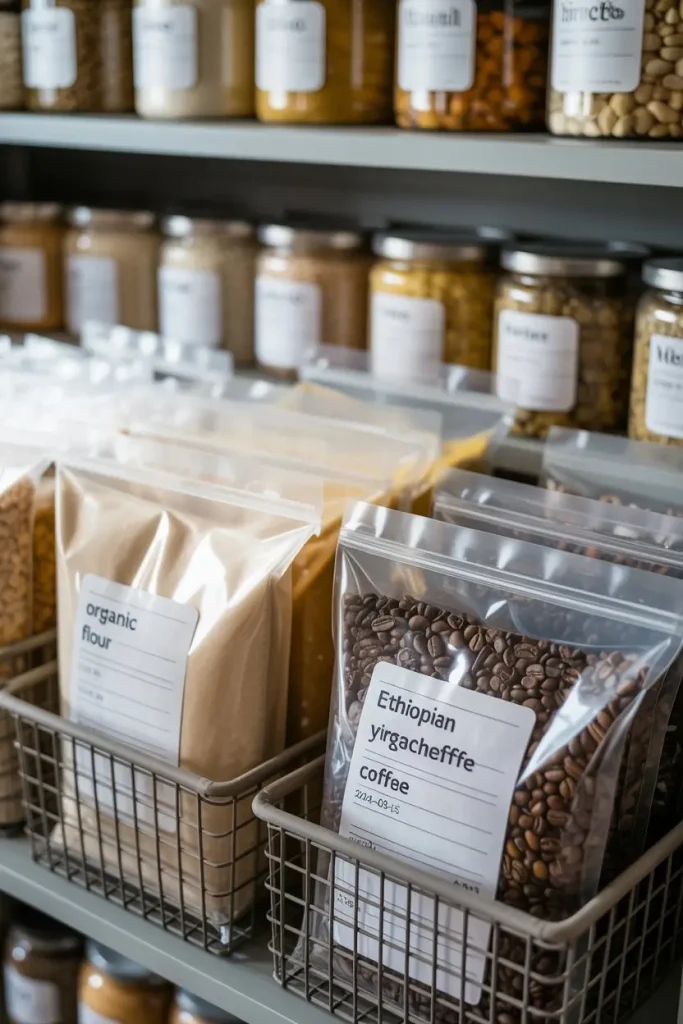
For dry goods or frozen foods you plan to store for months, vacuum-sealed bags keep air and moisture out. They’re a great way to store extra flour, coffee, or dehydrated fruits.
Flat-packed vacuum bags can stack neatly in bins or on shelves, freeing up space for other items. Label each bag with the date so you can use older items first.
11. Hang Wire Baskets Under Shelves
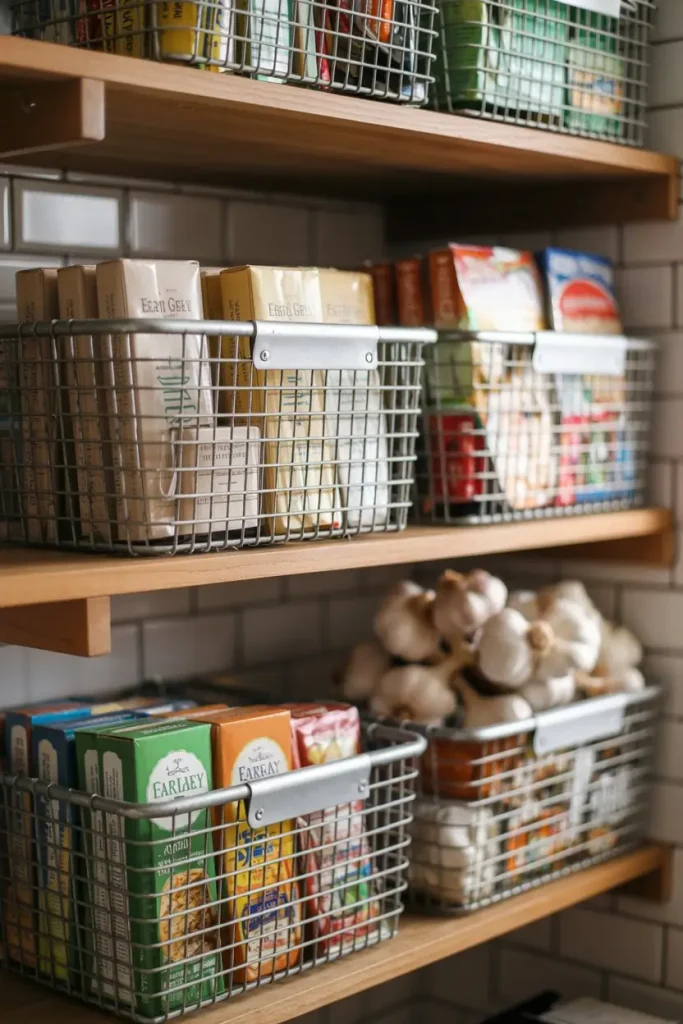
The space under your shelves is often unused. Wire baskets that hook onto the underside create instant extra storage. These baskets are ideal for snack packs, tea boxes, or small produce like garlic and onions.
Because they’re open, air can circulate around your food, which helps keep produce fresh.
12. Keep an Inventory Board in the Room
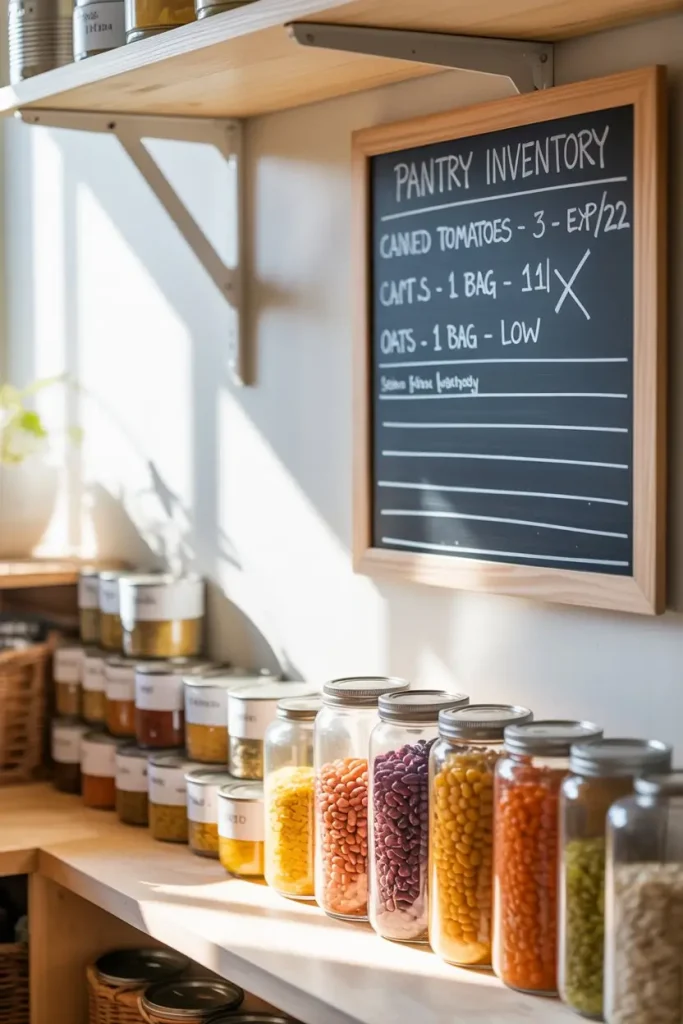
Even the most organized food storage room can fall into chaos if you don’t track what’s inside. A small dry-erase board or chalkboard on the wall lets you keep an updated list of what you have.
Mark items when you use them, and note when something is running low. This keeps you from overbuying and ensures you rotate stock before it expires.
13. Add Under-Shelf Lighting for Better Visibility
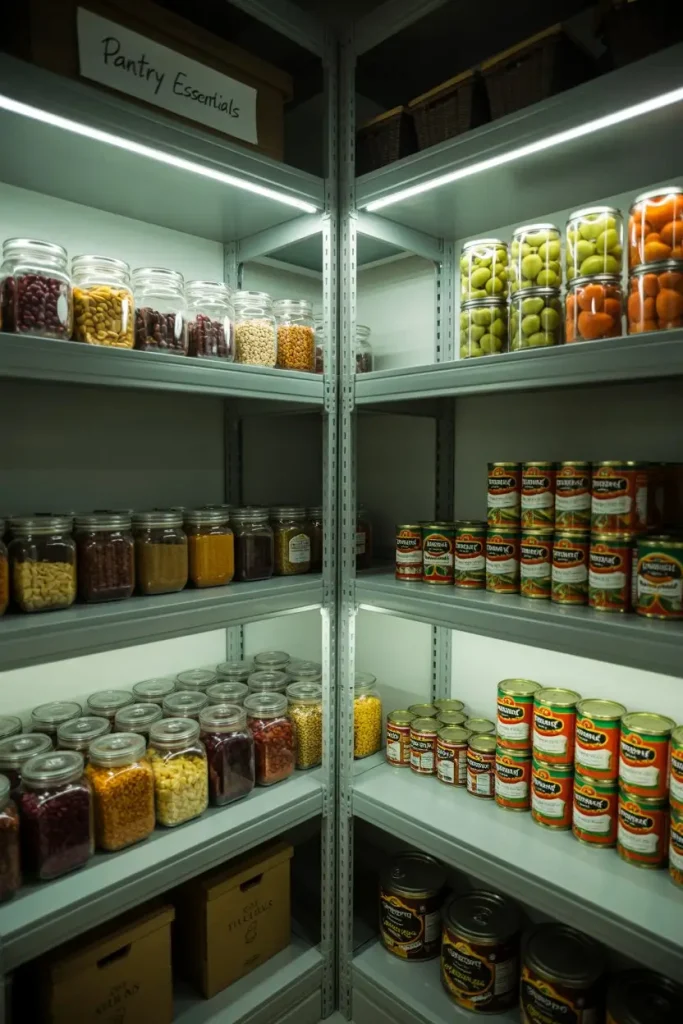
Dark corners can hide food for months. LED strip lights under shelves make every part of your storage room easy to see.
Choose motion-sensor lights so they turn on automatically when you enter. This saves energy and makes late-night snack runs easier.
14. Dedicate a Section for Emergency Supplies
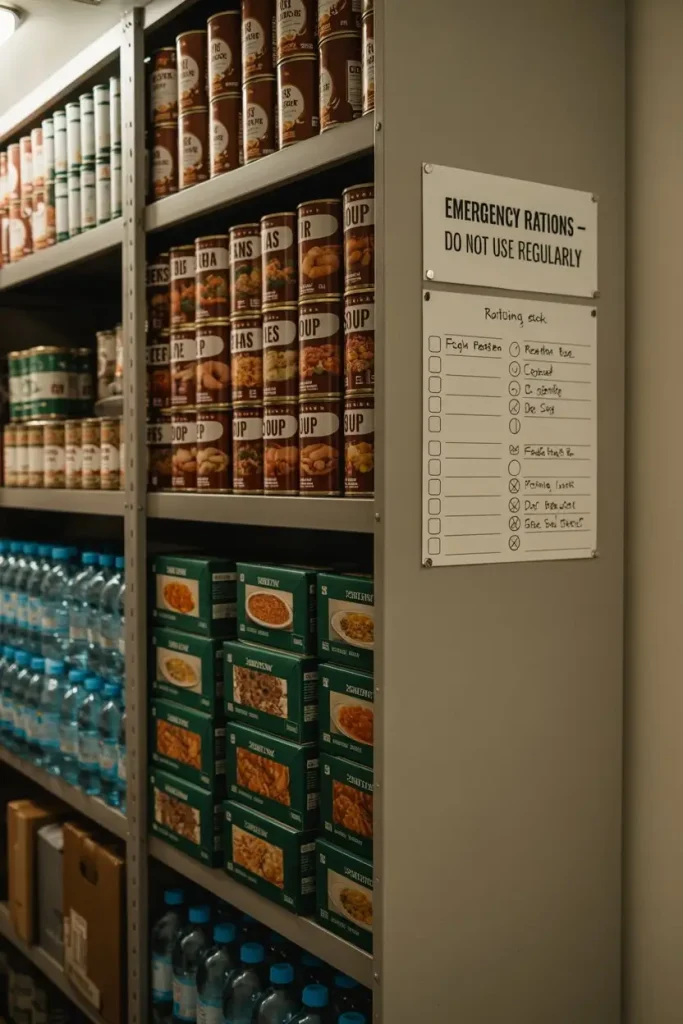
A well-prepared food storage room should always have a section for long-lasting emergency foods—canned goods, freeze-dried meals, bottled water. Store them separately from everyday groceries so they’re not accidentally used.
Review your emergency section every six months to replace expired items and keep it ready for unexpected situations.
15. Build a Narrow Shelf Between Studs
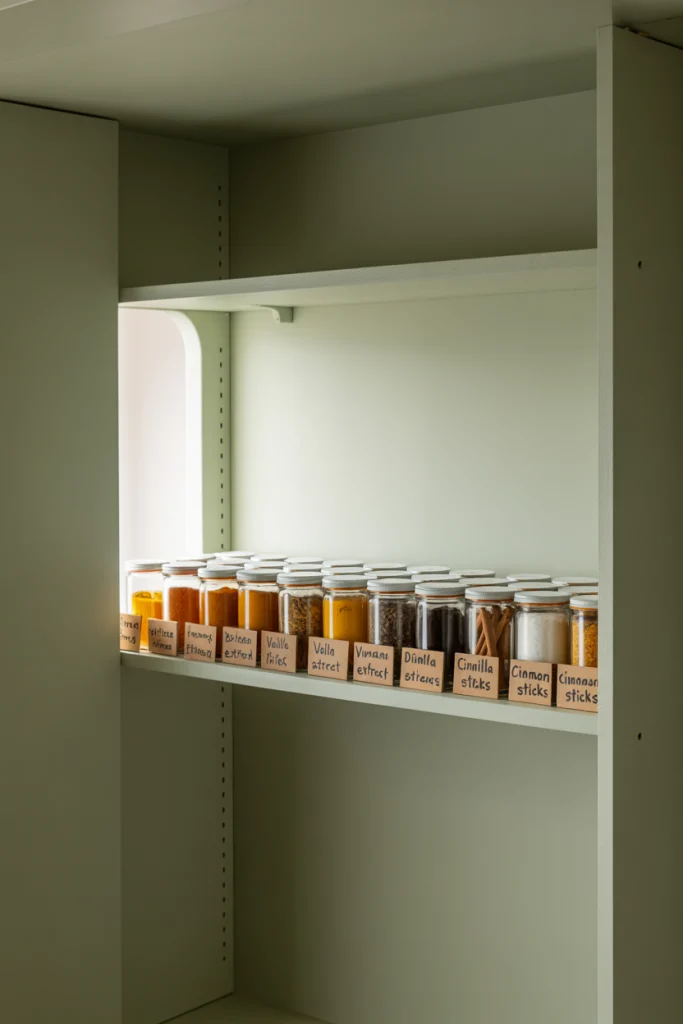
If your storage room shares a wall with another room, you may be able to use the space between studs for shallow shelving. This built-in feature is perfect for spices, small jars, or baking supplies.
Because it’s shallow, you’ll always see everything at a glance, which reduces waste and clutter.
